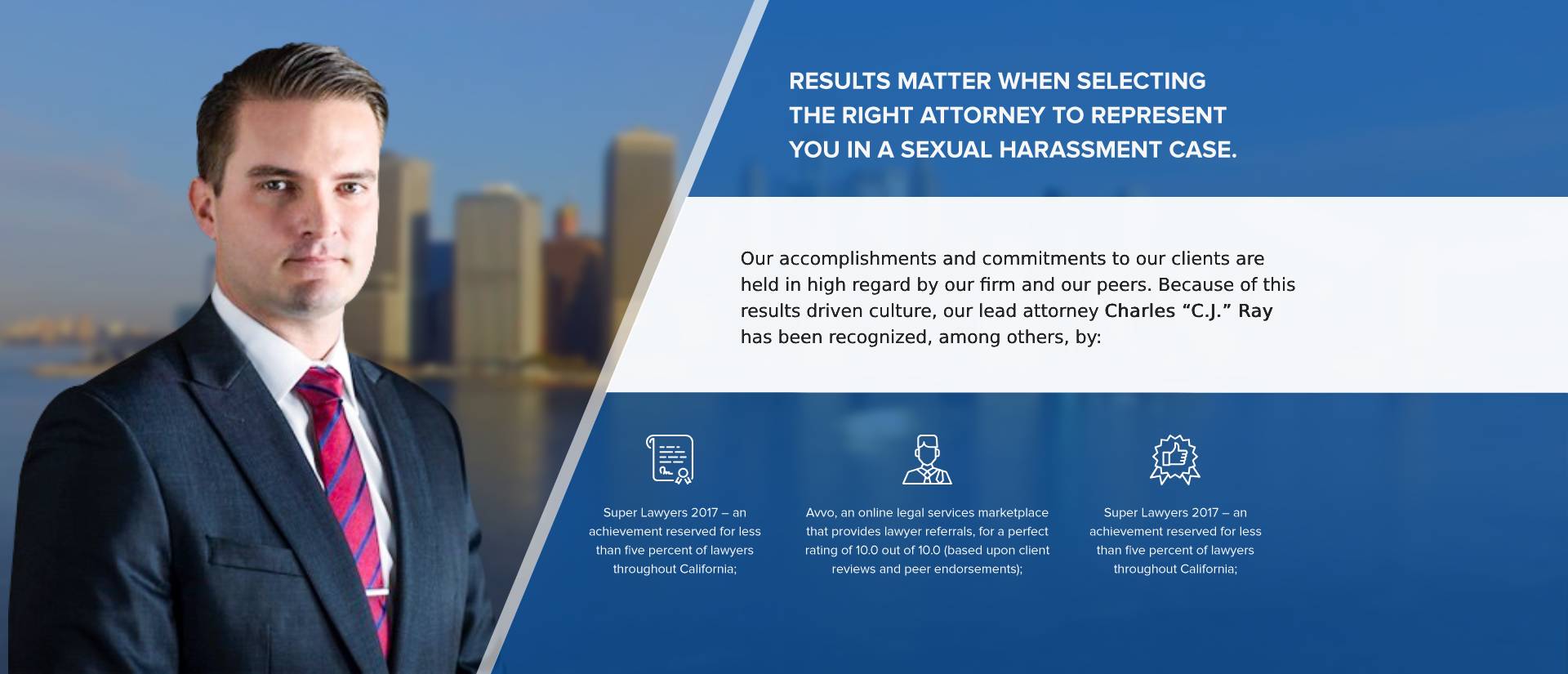Are you a building contractor? Do you suspect you are a victim of sexual harassment? Sexual harassment in California is serious crime, but it can be a complicated topic to understand. Though sexual harassment is a type of workplace discrimination, the workplace is widely defined, which we’ll explore in this article.
As the largest economy in the United States, California would actually rank fifth in the world if it were its own, independent economy. This means that the workplace is booming, and with it comes a lot of positives and negatives. Whether building commercial sites in big cities or working with individual homeowners in suburban or rural areas, building contractors are in high demand. Building contractors may work on their own, as your own small business, or you may be employed by a larger company who gets hired for big projects.
Either way, one risk you may not be aware of is sexual harassment. Regardless of who commits it – a boss, a colleague, a client, or a vendor – you may be the victim of sexual harassment.
Serving clients across the State of California, Sexual Harassment Attorney is a well-known and long-established network of attorneys who specialize in prosecuting sexual harassment cases on behalf of sexual harassment victims. We know the federal and state laws that govern sexual harassment inside and out, and we also know the judges and courts who oversee these cases. That means we are in the perfect position to help you fight a case of sexual harassment.
This article will help you, as a building contractor, understand exactly what sexual harassment is and how you may be the victim of it. We’ll also explore ways and tips for combatting sexual harassment, including pursuing legal action. Note that this article is informational in nature and shall not be used as specific legal advice, as only an experienced attorney with specific knowledge of your case can provide such guidance.
What Constitutes Sexual Harassment?
Sexual harassment is a wide-ranging offense because it can occur in many ways, in many places, and due to many reasons. Two laws govern sexual harassment in the State of California:
-
The Civil Rights Act of 1964 included a section known as Title VII. This is a federal law that makes illegal any employer discrimination towards an employee on the basis of any of the following factors: race, sex or gender, color, religion, or national identity. The S. Equal Employment Opportunity Commission (EEOC) is an extension of this, and makes it illegal for any employee to harass or discriminate either an actual employee or an applicant or potential employee due to the person’s sex or gender. Examples include:
-
Firing an employee on the basis of his or her gender
-
Opting not to hire an applicant because you want a woman, but the man is more qualified
-
Demoting a woman because she is pregnant
-
Refusing a promotion because you believe the person is gay
-
-
The California Department of Fair Employment and Housing (DFEH) also has a state law called the Fair Employment and Housing Act which further defines sexual harassment in the workplace in California. This law makes it illegal for any unwanted sexual advances or actions (physical, visual, or verbal) that are of a sexual nature, including any gender-based harassment. Here are some examples:
-
Offering employment benefits, like pay raises or promotions, in exchange for sexual activities that may include sexual intercourse
-
Flirting, making sexual gestures, or commenting on yours or other’s outfits in a sexual manner
-
Displaying or sharing sexually implicit or explicit pictures, jokes, posters, etc.
-
Taking revenge (such as demoting or firing) on an employee who refuses your sexual advances or reports them to an authority
-
Sexual Harassment Can Occur in Traditional and Non-Traditional Work Environments
While we often think of sexual harassment as occurring in a traditional white-collar job environment, where there are lots of desks and offices and employees, it is important to understand how sexual harassment is a form of workplace discrimination, but the definition of workplace is wide ranging – perhaps wide than you first thought.
Both the Civil Rights Act of 1964 and the DFEH’s Fair Employment and Housing Act explain the workplace: any interaction with any person in any place that is related to business. For instance, a workplace and a business-related relationship can include, but are certainly not limited to, any of the following examples:
-
A traditional office space, where an employee is harassing a fellow employee
-
A client meeting that takes place after-hours in a restaurant, where a client makes an unwanted sexual pass at the business representative
-
An inappropriate email exchange featuring nude photos and sexual innuendos between a person looking to hire you for your business skills
-
A text to a vendor confirming your order that veers into unwanted sexual flirtation
As a building contractor, your workplace can vary. You may be working in an office for a week, preparing for the next job or contract. You may be working on a specific outdoor construction site for weeks on end. You may be visiting a range of worksites, both under construction or at completion. You may be meeting with clients at any number of public or private spaces to provide estimates on future jobs. You may be emailing with a number of vendors, who provide you materials for your building work.
Importantly, all of these situations and working relationships can fall under the definition of workplace, and if discrimination on the basis of sex or gender-related actions or thought occurs, it may be considered sexual harassment.
Types of Sexual Harassment
Sexual harassment in California generally falls under one of two categories: hostile work environment and quid pro quo. The following sections provide brief descriptions of both types of sexual harassment.
Quid Pro Quo
This kind of sexual harassment is often the one we most commonly imagine when we hear the term “sexual harassment”. Indeed, quid pro quo harassment is more explicit and obvious, so it can be easier to determine, and perhaps easier to prove.
The term quid pro quo derives from a Latin term that translates as “this for that”, and we generally understand it as something given in exchange for something else. Therefore, quid pro quo type sexual harassment is any type of explicit or implicit exchange of something one party wants for sexual activity, favors, or related situations. Often involved is a sense of one party holding some power over another: a boss over an employee, one colleague over another, a client over a vendor, etc.
For instance, these are examples of quid pro quo sexual harassment:
-
A boss may offer you a promotion or pay raise as long as you’re willing to make out with him and let him touch you underneath your clothing for a few minutes
-
A potential client may hire you for a long-term building job in exchange for sexual intercourse every time you meet in person
Quid pro quo harassment can include both one-time incidents or repeated actions over a period of time.
Hostile Work Environment
Sexual harassment can also be categorized as hostile work environment sexual harassment. This definition is vaguer than the explicit forms of quid pro quo sexual harassment, but that means that many more situations can quality as hostile work environment sexual harassment in California.
A hostile work environment can be seen as the opposite of quid pro quo harassment: whereas quid pro quo sexual harassment is an exchange or implicit threat, a hostile work environment sexual harassment situation generally does not have an inherent or tangible threat to a person. Any repeated, pervasive, or severe actions that result in a work environment wherein the victim is unable to work, feels abused or offended, or the activities and behaviors interfere with the victim’s work may be considered a hostile work environment.
Here are some typical examples of hostile work environment sexual harassment:
-
A group of co-workers, both male and female, gang up on one colleague, sending sexually explicit pictures, images, and language by email every day
-
An executive of a company flirts with his assistant and she does not want this to continue, so she considers doing her job poorly or not showing up to work at all because the environment is so uncomfortable
-
A client you have worked with for over a year starts making sexist comments, and though they are not directed at you directly, you have to consider whether their continued support of your work is worth the distress it causes you
-
Your vendor for floor materials offered you a discount in an implied agreement that you would put up with his unwanted flirtations
Here are some examples that may apply to your work as a building contractor:
-
A homeowner hired you to build an extension on her home, but she teases you in a sexual way that makes you uncomfortable while working
-
Your boss made you the foreman of a commercial construction site, but makes fun of any woman you consider hiring because they aren’t as strong as men
Can My Sexual Harassment Claim Fall Under Both Types of Sexual Harassment?
Yes. Importantly, the federal court of appeals has ruled that a sexual harassment situation can actually qualify as both quid pro quo harassment and hostile work environment harassment, depending on the actions, activities, and timeline involved. And this makes sense, because a quid pro quo situation, wherein you may have been forced to engaged in a sexual activity for a job promotion, for instance, can then result in a hostile work environment, where you feel that your ability to actually perform your work has been compromised, offended, or otherwise threatened.
Must Sexual Harassment Include A Man and A Woman?
No. Sexual harassment can occur no matter who the people are: a man can sexually harass another man, a woman can sexually harass a man, and a gender-non-binary person can sexually harass a man or woman.
Though most reported cases of sexual harassment in California do include a man harassing a woman, sexual harassment can happen to anyone. As long as the basis for the discrimination is your gender, your self-determined sex, your sexual orientation, or a gender-related medical condition such as pregnancy, childbirth, a sex change, or other situation, you likely quality for a legal case of sexual harassment.
What Should I Do If I Am Being Sexually Harassed?
Sexual harassment is no joke and you should not take it lightly. The good news is that you have plenty of resources, allies, and paths to action to consider.
Here are some tips on how to handle or respond to sexual harassment:
-
Know your rights. The first step to knowing if you are a victim in sexual harassment is to understand the laws. If you have read this article, you’re already ahead of the knowledge curve. If you work for an employer or a client, you may have signed a boilerplate contract, but this likely included some acknowledgement of anti-discrimination in the workplace. If you’re unsure, you can review these under the EEOC and DFEH websites.
-
Speak up. If you’re feeling brave, confident, or angry enough, consider speaking up to your harasser at the moment that it occurs. This isn’t always possible, but often times, speaking up immediately lets the person know that you’re aware his or her behavior is inappropriate and unwelcome. This may immediately halt the harassment from progressing further.
-
Keep a record. Sometimes harassment is a repeat or routine occurrence, especially if it is resulting in a hostile work environment situation. Trust your gut – if this behavior is occurring, it is a good idea to take notes on each incident. Records need not be formal; simply note the date, time, location of each incident and a brief description of what occurred: words aimed at you, images sent to you, threats or advances made towards you. You can keep notes on your phone, in a small notebook, or even in an email or a spreadsheet – just be sure to keep it locked or private, and consider saving the notes in a non-work environment, so you can control your access to the notes. If possible, you could even keep any evidence, like pictures, text messages, and more.
-
Talk with your employer. If you work for an employer (you’re not self-employed), consider speaking with a boss or human resources representative that you can trust. They may be able to provide support, emotional guidance, or legal or appropriate workplace follow up to prevent the harassment. Importantly, employers are legally responsible to uphold sexual harassment laws within their workplace, as long as they are appropriately aware of any incidents or situations.
-
Consult with your labor union. Whether you work for an employer or are self-employed, you may be part of a labor union who represents building contractors. Labor unions know the laws around your type of skills and sexual harassment, plus they may be aware of other similar situations, either with similar building contractors or particular clients or vendors who are already known as sexual harassers. Labor unions may provide legal knowledge or guide you to a labor union lawyer who can help you.
-
Make a formal complaint. Thanks to federal and state laws, you can file a formal complaint with either the EEOC or the DFEH. Filing with either authority triggers an investigation process, which can take up to one year. Your company may also have a formal complaint system in place.
-
Seek an ally. Whether you opt to make a formal complaint against your harasser or you simply want to process and cope with the harassment on your own terms, you may experience a range of emotions. Finding a reliable friend to speak with can be help. Plus, countless local organizations provide emotional support.
-
Hire an attorney. You may want to explore legal action to take against your harasser, and an attorney who specializes in prosecuting sexual harassment cases is your best bet.
Finding a Sexual Harassment Attorney for Representation
If you’ve decided you are ready to hire a sexual harassment attorney, you have many options. Your first move may be to research a few different attorneys and law firms and arrange initial consultations with them. This first step is important, because you want to find someone who you can trust and you feel will understand you, respect you, and work hard on your behalf. You’ll also want to ask how pricing and attorney fees work – pricing structures and arrangements can vary widely. While the fees may feel expensive at first, you’ll want to consider how important your case is to you: the money may be well invested for the right attorney.
Contacting the Best Sexual Harassment Attorney Near me
No matter where you live in California, Sexual Harassment Attorney may be the perfect fit for your sexual harassment case. We are experts in giving advice and guidance to victims of sexual harassment, and we can help you take your case to court, if you decide that is in your best interest. With offices and professional lawyers across California, we are ready to go to work for you. Contact us today at 800-905-1856, we look forward to talking with you.



